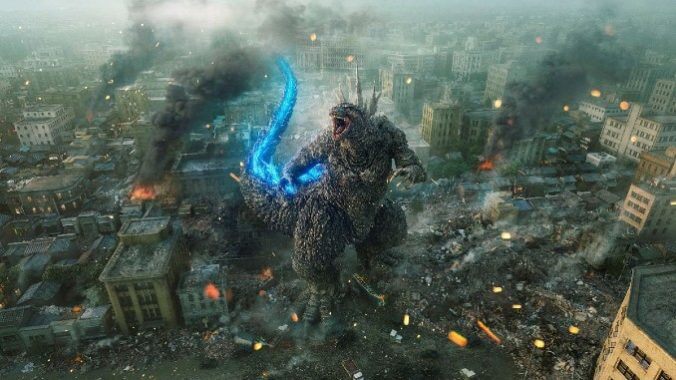Like the Original, Godzilla Minus One Is a Thrilling Monster Movie with a Lot to Say

With close to 40 films to Godzilla’s name, stories about the gargantuan radioactive lizard have taken numerous forms: A steady procession of monster-of-the-week style battles, where Earth’s guardian defends its turf against invading kaiju; reimaginings such as Shin Godzilla, which reframed these attacks through layers of governmental bureaucracy; or the up and down Hollywood spins on this material that tried to create a giant creature-themed cinematic universe. However, like many long-running series, it often gets lost in the shuffle that the original film is intriguingly singular, and thanks to its brilliant melding of camp and sharp social commentary, it sits among the best sci-fi flicks ever made.
While 1954 Godzilla’s stance on the horror of nuclear weapons has been well-documented, it is just as much about the general hurt of a devastated post-war Japan. As Tokyo burns for the second time in a decade, a survivor clenches their fist and curses Godzilla, who serves as a clear stand-in for the unhealed wounds delivered by American B-29s. The latest in the franchise, Godzilla Minus One, has a great deal in common with this first entry, a comparison that very much works in its favor. Between its thoughtful approach to its post-war setting, human focus and ability to communicate widespread calamity, it’s a well-considered reboot that stands near the top of this lineage.
Godzilla Minus One begins in the last days of World War II as Kōichi Shikishima (Ryunosuke Kamiki), a pilot ordered to carry out a kamikaze strike, feigns that his plane has mechanical issues to avoid his death. Unfortunately for him, he finds that he’s fled from one massacre to another. As he lands on a small island for repairs, a prehistoric creature appears from the sea (spoilers, it’s Godzilla) and attacks the crew, killing nearly everyone aside from Shikishima before diving back into the ocean. Having lived through these encounters, he returns home to learn his neighborhood has been obliterated in air raids. While he finds some semblance of family with Noriko (Minami Hamabe), a woman who also lost her home, and her adopted daughter Akiko (Sae Nagatani), he’s unable to fully move on from the survivor’s guilt of having escaped the war—and this monster—while so many others didn’t. Years go by until Godzilla, now mutated by radioactive waste, returns and sets its sights on a still-recovering Tokyo.
From the jump, it’s apparent that Takashi Yamazaki’s script and direction are more interested in the human side of the equation than some of the particularly bombastic entries in the series. The apocalyptic destruction of World War II comes across in shots of smoldering ruins that used to be communities and the pained expressions of their inhabitants left clinging to the tattered remains of their former lives. Beyond the physical scars of this conflict, we see its mental weight: Shikishima is tormented by his self-perceived “cowardice.” Even as he builds towards a fresh start after taking in Noriko and Akiko and meeting buddies at his dangerous job defusing ocean mines, he still can’t move on from his alleged failings and the trauma he endured, a dynamic that only becomes worse as his white whale re-emerges. Shikishima’s struggle with shirking his “duty” to carry out a kamikaze strike reverberates throughout Godzilla Minus One, giving him a compelling character arc that ties in with this narrative’s greater criticisms of Imperial Japan.
The growing cast of characters, including Shikishima’s work friends, grapple with distrust and distaste for a government that treated its own people like disposable commodities. There’s Kenji Noda (Hidetaka Yoshioka), or Doc, a former naval engineer who vows to help build a better world where young people aren’t sent to the slaughter. Akitsu (Kuranosuke Sasaki), the crusty captain of this group’s mine disposal boat, initially comes across as someone who would favor the old guard. Instead, he expresses disgust for how things have been. These characters push for societal reform that embraces the sanctity of life while Shikishima grapples with the toxic expectations of a deposed regime that sentenced young men to die in the name of nationalism. While this story convincingly captures the physical pains of rebuilding, it also depicts the deeper struggle of expunging these lingering expectations. More than just intellectually communicating these ideas, Shikishima’s well-conveyed relationship with his found family and coworkers gives this conflict emotional stakes and inspires hope that he’ll be able to accept his new life.
-

-

-

-

-

-

-

-

-

-

-

-

-

-

-

-

-

-

-

-

-

-

-

-

-

-

-

-

-

-

-

-

-

-

-

-

-

-

-

-








































